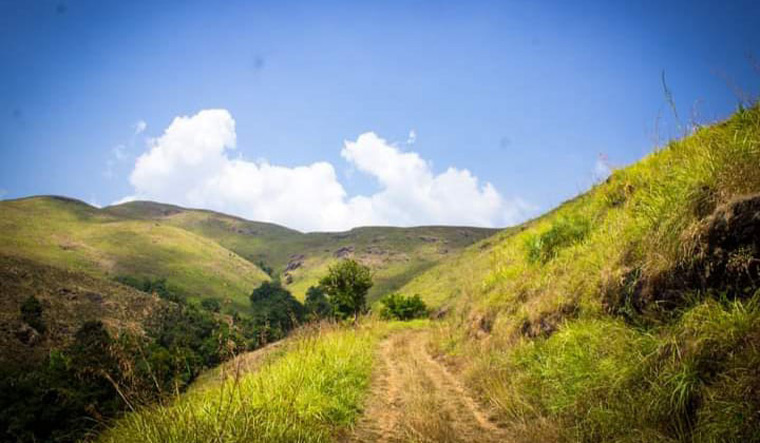Every year, multitudes of pilgrims at the Sabarimala Ayyappa temple in a Kerala forest go into raptures at the sight of a flickering flame far away at Ponnambalamedu grasslands. Their numbers have only increased even after the official revelation that the light, which they thought divine, was purely a manmade one.
According to tribal lore, Ponnambalamedu is the birthplace of the lord Ayyappa. It was here that the king of Panthala (or Pandalam) happened to see him as a baby lying on a rock. This spot is now known as moola-sthanam or ‘the origin’.
Legend goes that a demoness called Mahishi tormented the sages and subjects of Panthala. She was a chimera, with a buffalo head and a human body, and was invincible for anyone born of a natural male-female union. So, to kill her, Ayyappa was born the son of two male gods, Shiva and Vishnu who was disguised as an enchantress.
The flickering light at Ponnambalamedu marks the culmination of the annual rituals at Sabarimala. The light is known as ‘Makara Vilakku’. Until the late 1990s, very few people knew that it was lit by the local tribals, to signal that they had sighted a star rise on the horizon and so the temple could open for deepa-aradhana (evening puja). The star (Sirius) was called ‘Makara Jyoti’. Over time, the flame assumed a divine significance of its own which even surpassed the deepa-aradhana.
Eventually, as the tribals’ interest in performing the ritual waned, the Travancore Devaswom Board, which manages the temple, began managing the flame as well. Later, it built a concrete platform a few metres from the moola-sthanam so that the flame could be seen even from Pamba, about 8km from the temple.
 The concrete platform, where the flame is being kindled.
The concrete platform, where the flame is being kindled.
But, a decade ago, the Devaswom Board admitted that there was nothing miraculous about the flickering light. The confession, however, had little effect on the fervour of the pilgrims.
The grasslands of Ponnambalamedu lie in the Pamba range of the Periyar tiger reserve (west). There is a 4km-long jeep road leading to Ponnambalamedu from the Kochu Pampa forest check-post. One would find the road blocked, with iron bars at two different places. Entry is strictly controlled by the forest department.
The road snakes through vast swathes of pristine and ecologically fragile grasslands marked by the presence of dense shola forest en route, which is unique in species composition.
Towards the end of the road there is an old fire watch tower for spotting incipient blazes in the grasslands during summer. It is a fact that annual fires in the grasslands prevent shola forests from ‘salami slicing' into the grasslands.
After the fire watch tower, there is a trek route that is less than a kilometre long to reach the moola-sthanam. Age-old engravings seen on this rock are believed to be the handiwork of tribals. There is a lone graceful tree called ‘irumbarakki’ (Filicium decipiens) abutting the new concrete platform and edging the cliff. A pond nearby, named after the lord Rama, is frequented by wild animals as is evident from the hoof prints and pug marks in the soil.
The flickering flame is no more a secret or a mystery. Pilgrims have accepted its human origin. But they still do not have sufficient amenities at the Sabarimala temple, or on the way to the temple, to watch the flame or the lord. There are hours-long traffic snarls and never-ending queues for darshan. As many as 104 lives were lost in a ghastly stampede during Makara Vilakku on January 14, 2011. Earnest efforts are needed to avert such incidents in the future.
The author is a divisional forest officer and wildlife warden.



